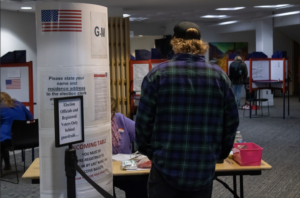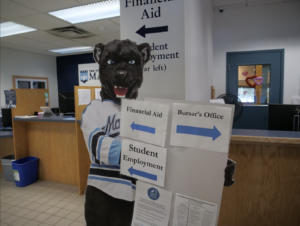Senior year of highschool marks a huge transition period for students. For those planning to attend college, it means embracing the notorious application process and placing the uncertainty of their future into the best institution they possibly can. Their future rests on the decision they make, so it’s no surprise students spend a significant amount of time polishing their essays and obsessing over standardized testing scores.
College advisors stratify colleges into the acceptance rate hierarchy—the best being the “reach schools,” middle being the “target schools,” and worst being the disesteemed “safety schools.” Based solely on acceptance rates and expected standardized testing scores, these terms contribute to a potentially harmful culture of college elitism. A culture that unfortunately suggests that students’ self worth and future are reflected solely by the acceptance rate of the institution where they spend the next four years.
This affects not only the self esteem of students but more importantly the financial and social futures of these impressionable young adults. With little guidance otherwise, the pressure to attend the most prestigious university often leads students to take on substantial student loan debt.
In 2020, the average accumulated debt for graduates was nearly $30,000. When the choice is between attending a more affordable, less prestigious state school and a more expensive, lower acceptance rate private school, many choose the latter. With promises of higher-paying jobs, better opportunities and smarter peers, for many years this was the accepted collegiate path to take. It wasn’t until the COVID-19 pandemic’s national shift to remote learning that students began to question this paradigm.
Behind the same screens, learning the same material, students began to question the true cost of education. State schools are now gaining popularity for their affordable cost, large sizes and equally competitive programs. These once frowned upon “safety schools” are becoming popular alternatives to the hefty price tag attached to prestige, and rightfully so. Beyond affordability, many community colleges and state schools offer incredible programs, diverse student populations, broad athletic programs and equally expansive career opportunities.
The University of Maine has an acceptance rate of 92%. It has rolling admission and is a test-optional school. By the traditional college ranking hierarchy, for some it’s considered a “safety school,” and that trivializing term insinuates that UMaine is somehow lesser than similar institutions. It dismisses the incredible aspects of this school, and it discourages high school students from pursuing an affordable, accessible and competitive education.
For in-state students, tuition is less than $6,000 per semester. For New England regional students, it’s less than $10,000. UMaine has a 16:1 student to faculty ratio and has an average 10-year post graduate earnings of $46,700. For comparison, the national median is $34,300. These statistics are often overlooked and undervalued.
Other commonly omitted aspects of UMaine are the incredible academic opportunities this school offers. UMaine has a strong nursing program packed with diligent students. The arts program, taught by acclaimed professors, provides immersive experiences in the print studio and other great facilities. The Maine Track MD program offers a pathway for students to attend Tufts Medical School, and the already impressive engineering program is upgrading to a $78 million Ferland Engineering Education and Design Center.
Students can de-stress at the architecturally renowned rec center or practice bouldering at the indoor rock climbing facility. They enjoy Greek life, student organizations, and exciting D1 athletic events, which will be further enhanced by the future $110 million athletic facility.
The strong community, vibrant spirit, diversity and inclusion define this school, not the acceptance rate. The academic excellence, hard working students, caring professors and post-graduate opportunities define this school, not the perception of others. Every day, the students and faculty work hard to invest in our future. To us, UMaine is not a “safety school.” It’s an opportunity, and it’s our home.
Don’t count your state schools out. Research the financial options they can provide you. Apply for scholarships, learn about their different programs and prioritize what a school can provide for you over the demands it expects from you. Lastly, remember that the four years of college are what you make of it. Don’t underestimate your safety schools, and don’t underestimate yourself.









